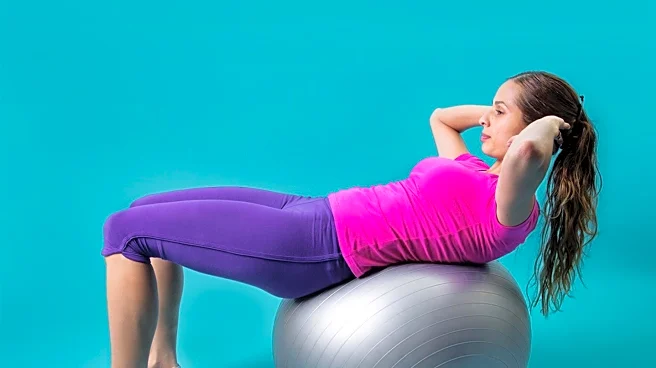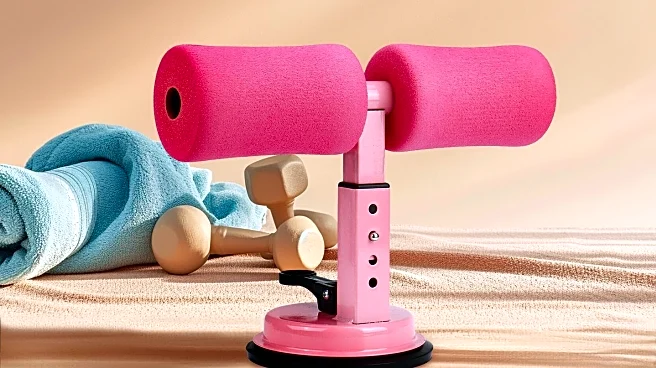What's Happening?
A mini stepper, currently available for $45, is gaining popularity as an effective fitness tool for those with sedentary lifestyles. The device, which mimics the action of walking up a staircase, is compact
and portable, making it easy to store or transport. Users have praised its ability to provide a full-body workout, especially when combined with exercise bands. The stepper is noted for its solid construction and quiet operation, allowing users to exercise indoors regardless of weather conditions. It is particularly appealing to those who find it challenging to maintain regular physical activity due to time constraints or lack of motivation.
Why It's Important?
The mini stepper's affordability and convenience make it an attractive option for individuals looking to incorporate more physical activity into their daily routines without investing in expensive gym equipment. As sedentary lifestyles become more common, especially with the rise of remote work, tools like the mini stepper offer a practical solution to combat inactivity. This device can help improve cardiovascular health, strengthen muscles, and increase overall fitness levels, potentially reducing the risk of lifestyle-related health issues. Its popularity highlights a growing trend towards accessible and space-efficient home fitness solutions.
What's Next?
As more people seek convenient ways to stay active at home, the demand for compact fitness equipment like the mini stepper is likely to increase. Manufacturers may respond by introducing new features or variations to cater to different fitness levels and preferences. Additionally, the integration of technology, such as fitness tracking apps, could enhance the user experience by providing personalized workout routines and progress tracking. This trend may also influence the broader fitness industry, encouraging the development of more innovative and affordable home exercise solutions.
Beyond the Headlines
The rise of compact fitness equipment reflects a shift in consumer behavior towards more flexible and personalized fitness options. This trend may have broader implications for the fitness industry, potentially leading to a decline in traditional gym memberships as individuals opt for home-based solutions. Furthermore, the emphasis on convenience and affordability could drive innovation in the design and functionality of fitness products, making exercise more accessible to a wider audience. This shift could also encourage a cultural change, promoting a more active lifestyle as part of daily routines.











